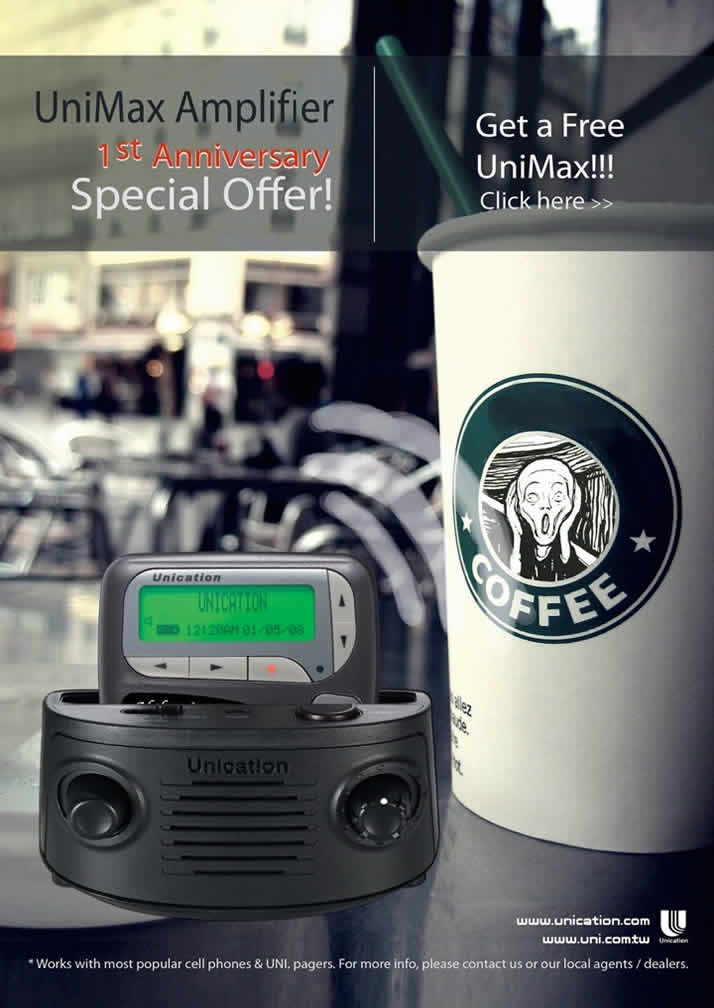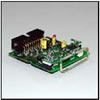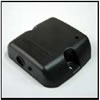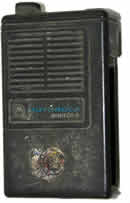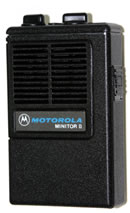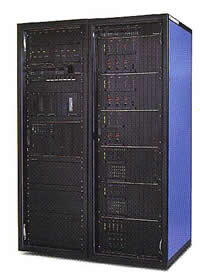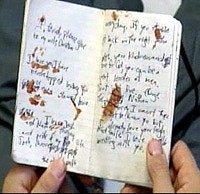Ten years of BlackBerry By Chris Ziegler
Mobile Editor
Engadget
posted Dec 28th 2009 3:00PM 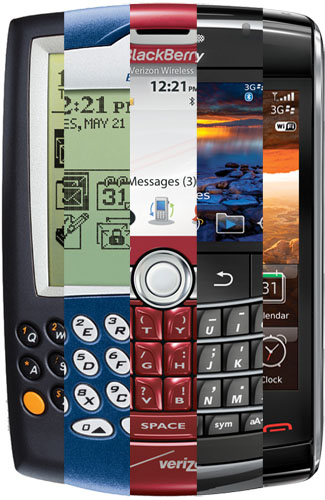
The year is 1999. Bill Clinton is the President of the United States, gas is 94 cents a gallon, Bondi Blue iMacs are a staple in dorm rooms across the country, and Microsoft is trying to bring the desktop Windows experience to the pocket, pushing its Palm-size PC concept (after Palm had quashed the original "Palm PC" branding) on a world still feeling jilted by the failures of the Apple Newton. 3Com subsidiary Palm and its heavyweight licensee Handspring have figured out something interesting about the still-nascent PDA market, though: people like simplicity. If an electronic organizer does what it says it's going to do, keeps your information in sync with your PC, runs for forever and a day on a single set of batteries, and does it all with a minimum of fuss, people will buy. It's an exciting, challenging, and rapidly-changing era in the mobile business. It's the network, stupid This is the landscape Canadian start-up Research In Motion faced at the tail end of the millennium. It seemed clear that "staying connected on the road" was the Next Big Thing — email had finally started to become a standard in corporate communication, after all — but the roadblocks were many and formidable. "Always on" cellular technologies like GPRS and 1xRTT weren't yet readily available, and circuit-switched data running over pervasive D-AMPS and CDMA networks was painfully slow and expensive — not to mention a death wish for battery life. Manufacturers and service providers took a two-pronged approach to overcoming the limitations: one, keep data consumption modest; and two, bypass the traditional cellphone networks altogether. Two-way paging networks like ReFLEX didn't have the bandwidth to handle the data demands of a late 1990s-era PDA with a big display, but DataTAC and Mobitex networks — running at a blistering 19.2Kbps and 8Kbps, respectively — were already widely deployed across North America. Neither technology had been conceived with consumer use in mind, but they were robust, proven, and most importantly, available. 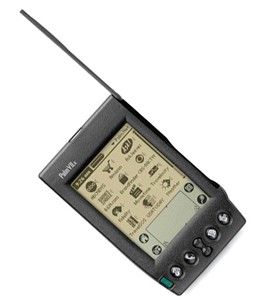 Palm takes a leap of faith — and falls flat Palm takes a leap of faith — and falls flat Riding a wave of commercial successes, Palm saw the writing on the wall and plunged head-first into the connected market with its Palm VII, which used a Mobitex-based service called Palm.net to offer bite-sized chunks of relevant data — news headlines, weather, email, flight times, and the like — on a device that resembled an overgrown Palm III with a flip-up antenna. The product was troubled from the start. Though Palm.net's heart-stoppingly expensive monthly pricing wasn't necessarily an issue for the business-minded target audience, the device relied on proprietary "web clippings" from content providers to reduce data consumption; if your favorite newspaper didn't work with Palm to develop a web clipping app, you were stuck using the shoddy WAP browser. What's more, despite its whopping $599 sticker price, it failed to borrow from the high-end Palm V's legendary industrial design. Palm hobbled along with two more Palm.net-compatible models, the VIIx and i705, before the GSM-based Tungsten W along with Treos obtained through its acquisition of Handspring overshadowed the dedicated network and doomed it to closure in 2004. 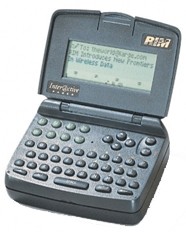 The BlackBerrys aren't ripe yet in Waterloo The BlackBerrys aren't ripe yet in Waterloo Palm, of course, didn't need the Palm VII to succeed. The company would go on to see plenty of success from its traditional PDA business and — eventually, anyway — the Treo smartphones it was able to add to the line through its acquisition of Handspring. Meanwhile, the always-on, always-connected market was still waiting to be won, and RIM was perfectly positioned to take the prize. It had been making Mobitex radio modules for industrial systems for many years, and in 1995 had introduced its Inter@ctive Pager 900 — a fairly revolutionary product that promised two-way email communication from a device small enough to fit on a belt holster. The technology was there — RIM merely had to wait for email to become business-critical while working on making its hardware smaller, sexier, and ultimately, indispensable to anyone who picked it up. In 1998, the Inter@ctive Pager 900 — a bulky brick with a flip-top display — was succeeded by the smaller Inter@ctive Pager 950. As its name implied, RIM considered the 900 and 950 pagers first, emailing devices second; paging was still a force to be reckoned with in the mid-90s (SMS was yet to become relevant in North America) and the company needed to identify with the paging crowd in order to find an audience. Indeed, RIM's own press release for the 950 proudly declared the device a "revolutionary two-way pager that allows users to both send and receive full-length, error-free, alphanumeric messages with guaranteed delivery." The 950 retailed for $360 with plans starting at $25 a month through BellSouth, one of several companies that would ultimately become Cingular (and eventually AT&T Mobility, though Cingular's Mobitex network — Cingular Interactive — would be sold off prior to the name change). That pricing put the device well within the reach of any company who needed its employees a page (or an email) away. RIM estimated that some 80 percent of pages required a response — and at a time when one-way pagers still dominated the belts of field techs, executives, and doctors, the 950 was priced right to steal some of that market. Even better, the 950 was barely larger than those one-way devices it sought to displace.  A legendary brand emerges A legendary brand emerges In early 1999, RIM was in fat city. It was coming off a record quarter of earnings thanks to brisk sales of its handhelds and new contracts for its wireless modems, but it wasn't standing still. On January 19 of that year, the company made a bold declaration: email's the future. The Inter@ctive Pager devices were excellent two-way pagers, yes, but that wasn't where the market was going — and RIM knew that it already had a powerful framework for mobile email in play. It introduced a tight little solution called "BlackBerry," which essentially bundled a version of its Inter@ctive Pager 950 with a PC dock, a new service for synchronizing to Microsoft Exchange accounts, and optionally, a product called BlackBerry Enterprise Server geared at corporations looking to manage fleets of these devices. Unlike the Palm VII, BlackBerry didn't try to be fancy — no "web clippings," no huge touchscreen, no handwriting recognition, and no massive flip-up antenna. Instead, RIM's device was almost singly focused on delivering a killer email experience with a scroll wheel, relatively comfortable QWERTY keyboard, and true push service (something many other platforms are still trying to get right ten years later, interestingly). For suits who'd been sucked into the Exchange ecosystem for corporate email, BlackBerry was a brave new world — a chance to untether — and they came calling in droves. And that was just the first couple months of the year. Later in 1999, RIM would release the Inter@ctive Pager 850, which expanded BlackBerry's North American footprint by bringing the technology to DataTAC networks in the US and Canada (battery life dropped from the 950's claimed three weeks to just one week, but the 850's support for rechargeable NiMH packs made it a bit more palatable). Shortly thereafter, the company announced that it would adopt Sun's Java 2 Micro Edition platform for third-party development in its devices, and — for better or worse — BlackBerry developers write in Java to this day. 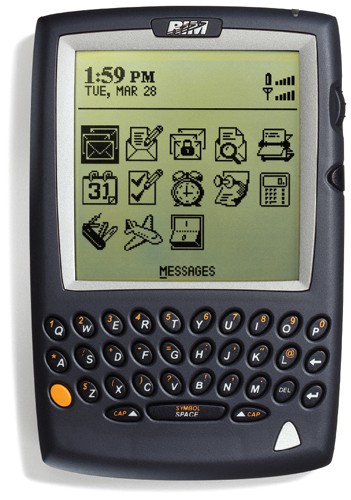 A form factor more familiar A form factor more familiar By 2000, BlackBerry had cemented itself as a power brand — a corporate status symbol. Paging was on the way out, and RIM had somehow expertly ridden the wave right into mobile email as though that had been its plan all along. Thing is, the display on the 850 and 950 models — a carry-over from the Inter@ctive Pager days — wasn't particularly well-suited for reading emails, which tended to be longer and richer than old-school pages. The solution? A much, much larger display. RIM introduced the BlackBerry 957 in concert with BlackBerry OS 2.0 in April of 2000. It would prove to be a landmark device for RIM, though it may not have seemed that way at the time. At its release, it was little more than an overgrown 950, but unlike its little brother, the 957's basic form factor would ultimately stand the test of time — and if you let your eyes go out of focus just a bit, you can actually see the beginnings of the ubiquitous user interface found on every BlackBerry sold today. At this point, carriers and content partners were really starting to get it: to borrow a phrase from a 2000 press release detailing a new partnership with Nortel, RIM was becoming a champion of the "always on, always connected" internet, and everyone wanted in on the mojo (Nortel had just invested $25 million in RIM; ironically, RIM would try to buy a large chunk of Nortel's bankrupt remains just nine years later). Rogers (then Rogers AT&T), Bell Mobility, and BT were among the heavyweight networks to welcome BlackBerry to their lineups. AOL created a version of AOL Instant Messenger for the platform, and RIM started bundling its first web browser with the 950 and 957, though using it ran a stiff $9.95 a month — for 25KB. Yes, twenty-five whopping kilobytes! Fortunately, unlimited service was available for another $10, although it's amusing to think that wireless data devices were ever rudimentary enough, mobile content services simple enough, and networks slow enough to justify a service that allotted just a few thousand bytes every month. Conquering the organizer Today, cloud computing is a fact of life; if you use Gmail, Facebook, Flickr, or any of their contemporaries, much of what makes you who you are is stored in some nebulously-defined network of servers you'll never see — computers that look like overgrown refrigerators, sound like jet engines, and live in cold, windowless facilities close to power plants and jaw-droppingly fast internet connections. In 2001, the cloud as we know it today was just an idea on a whiteboard (and no one was calling it "the cloud") but BlackBerry customers were starting to taste bits and pieces of the experience. RIM used CTIA Wireless in Vegas that year as the venue to introduce the next iteration of its connected experience: wireless calendar synchronization. Up until this point, the BlackBerry platform had been about email first, everything else second (and really, you could argue that's still the code RIM lives by today), but the company was starting to acknowledge that a businessperson's mobile office was about more than messaging — and it's not always convenient to pop open the laptop to check the day's schedule. Besides, while RIM was making wireless data a mainstream concept in the pocket, laptop data cards were still exceedingly rare. Of course, your average Joe off the street still couldn't walk into their carrier's shop, buy a BlackBerry, and get their personal Outlook calendar delivered over the aether — but for corporate customers with Exchange and BES installations, things were really getting interesting. Pushing "push" BlackBerry didn't just commoditize mobile email or connected organization — it helped pioneer the very concept of "push." Push continues to be an elusive, contentious technology for users of many systems, devices, and mobile platforms to this day — the idea that you get new content pushed to you as it happens, rather than waiting until you request it — but RIM was well ahead of the game here, touting its push technology by name as early as 2001. If someone shot you an email, you had it immediately. Meeting requests zipped down to you the second they were made. Of course, push would ultimately go on to become one of BlackBerry's hallmarks and one of the major reasons users continue to cite for steadfastly refusing to try other platforms, no matter how outdated RIM's well-worn interface may now seem by modern standards — it's a really powerful selling point.  2001 marked a number of important new partnerships for RIM, too, including VoiceStream (which would ultimately become T-Mobile USA) and Italy's TIM. Maybe more interesting, though, was an announcement the company made at the very tail end of the year: it'd be developing a device compatible with Motorola's iDEN network technology in partnership with Nextel. iDEN's claim to fame, of course, was (and still is) its push-to-talk interface — so did this mean that a hybrid BlackBerry cellphone was in the works? Smartphones were still a novelty at the time and heavyweights like Microsoft hadn't yet come to play ball, but the synergy was pretty obvious: road warriors do their email and take conference calls from the back of the cab on the way to LAX, after all. 2001 marked a number of important new partnerships for RIM, too, including VoiceStream (which would ultimately become T-Mobile USA) and Italy's TIM. Maybe more interesting, though, was an announcement the company made at the very tail end of the year: it'd be developing a device compatible with Motorola's iDEN network technology in partnership with Nextel. iDEN's claim to fame, of course, was (and still is) its push-to-talk interface — so did this mean that a hybrid BlackBerry cellphone was in the works? Smartphones were still a novelty at the time and heavyweights like Microsoft hadn't yet come to play ball, but the synergy was pretty obvious: road warriors do their email and take conference calls from the back of the cab on the way to LAX, after all. Feeling litigious For RIM, the decade has been filled with seemingly countless bouts of Law & Order-worthy courtroom drama, a theme that can trace its origins to November of 2001 when IP holding firm NTP — whose mere mention causes knee-jerk grumbles of "patent troll!" in some circles — filed its first lawsuit against the company. The suit focused on technologies surrounding the wireless transmission of email, which... well, kind of sums up RIM's entire business model, so the spat naturally garnered its fair share of attention. After some four and a half years of legal action, tentative settlements, and breakdowns, RIM and NTP finally came to terms to the tune of $612.5 million — considerably less than the $1 billion NTP had originally wanted, but still a breathtaking sum for a company that had done little more than sit on some purely theoretical technology. 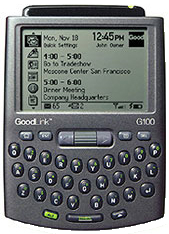 Of course, RIM was sitting on an enviable IP portfolio of its own by this point, and that portfolio was starting to pay dividends right around the time of NTP's original filing. 2002 saw a licensing agreement take hold with Palm (without which the Treo line's famously good keyboards would've had a hard time existing) and a series of claims filed against upstart rival Good Technology — which at the time was working on a suspiciously BlackBerry-esque device called the G100 to accompany its server-side suite that duplicated much of RIM's functionality. Good would ultimately go on to abandon the G100 to focus strictly on software and services and undergo a couple takeovers — most recently by well-known patent plaintiff Visto — so the rough-and-tumble hardware biz clearly hadn't treated them with as much kindness as it had RIM. Of course, RIM was sitting on an enviable IP portfolio of its own by this point, and that portfolio was starting to pay dividends right around the time of NTP's original filing. 2002 saw a licensing agreement take hold with Palm (without which the Treo line's famously good keyboards would've had a hard time existing) and a series of claims filed against upstart rival Good Technology — which at the time was working on a suspiciously BlackBerry-esque device called the G100 to accompany its server-side suite that duplicated much of RIM's functionality. Good would ultimately go on to abandon the G100 to focus strictly on software and services and undergo a couple takeovers — most recently by well-known patent plaintiff Visto — so the rough-and-tumble hardware biz clearly hadn't treated them with as much kindness as it had RIM. Finally, two devices become one 2002 would prove to be a watershed year for the smartphone. Nokia's Communicator line had been around since the 1990s, but its models were niche devices — bulky beasts that didn't function very well as phones, PDAs, or computers — and they clearly weren't the catalyst the industry (and consumers) needed to take the concept mainstream.  Following news late in 2001 that there'd be a BlackBerry coming to Nextel's iDEN network, a flurry of press releases hit in the first part of '02 touting that new handhelds with "data and voice services" would be made available on carriers around the world; AT&T in the States and Rogers AT&T in Canada both followed Nextel's lead in committing to offering them. Nextel's announcement was especially positive, dropping the bombshell that the companies had signed a "multi-year" agreement to supply iDEN-powered BlackBerrys to the network. Of course, that agreement must've worked out pretty well for everyone involved, seeing how the relationship continues to the present day. Following news late in 2001 that there'd be a BlackBerry coming to Nextel's iDEN network, a flurry of press releases hit in the first part of '02 touting that new handhelds with "data and voice services" would be made available on carriers around the world; AT&T in the States and Rogers AT&T in Canada both followed Nextel's lead in committing to offering them. Nextel's announcement was especially positive, dropping the bombshell that the companies had signed a "multi-year" agreement to supply iDEN-powered BlackBerrys to the network. Of course, that agreement must've worked out pretty well for everyone involved, seeing how the relationship continues to the present day. Well, at first, it turns out that RIM really wouldn't be helping mainstream smartphone adoption any more than Nokia had. RIM's very first voice-enabled BlackBerry handset — the 5810 — debuted on Rogers AT&T in April of 2002 for a stiff CAD $750 (about $715 at today's conversion rates), looking like nothing more than a 957 with a headset jacked into it. That's because it was nothing more than a 957 with a headset jacked into it. Just as wireless calendar synchronization had taken a back seat to email, RIM was now treating another critically important function — voice — as an afterthought. The all-important messaging experience was as good on the 5810 as it was on any BlackBerry before it, but everything about the glued-on phone functionality screamed "usability nightmare," from the non-numeric pad digit layout to the handsfree permanently wired into place (well, not permanently, but it may as well have been as long as you wanted to use the device as a phone). Bluetooth and integrated speakerphones were yet to become must-have features in 2002, and you certainly weren't going to find them here. 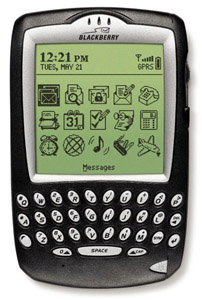 The engineers up at RIM headquarters weren't taking a breather, though — far from it. The early part of the decade was a pretty magical time for wireless, for mobile, and for gadgetry in general; a primordial soup of paradigm-shifting technologies were all rapidly coming to fruition at the same time — everything from cheap, high-quality color LCDs to lithium-ion polymer batteries and broadly-available data networks — and phones from all companies were being developed, announced, and released more rapidly than they ever had been before. Gone were the days of owning a DynaTAC for eight years or a StarTAC for four — useful innovation was simply coming to market too quickly for consumers (or manufacturers) to get comfortable for more than a year or two at a stretch. The engineers up at RIM headquarters weren't taking a breather, though — far from it. The early part of the decade was a pretty magical time for wireless, for mobile, and for gadgetry in general; a primordial soup of paradigm-shifting technologies were all rapidly coming to fruition at the same time — everything from cheap, high-quality color LCDs to lithium-ion polymer batteries and broadly-available data networks — and phones from all companies were being developed, announced, and released more rapidly than they ever had been before. Gone were the days of owning a DynaTAC for eight years or a StarTAC for four — useful innovation was simply coming to market too quickly for consumers (or manufacturers) to get comfortable for more than a year or two at a stretch. Make no mistake, it was a fun (if not terribly expensive) time to be paying attention to the market. Just six months — yes, merely half a year — after launching its first voice-capable BlackBerry, RIM gave the people what they really wanted: the 6800 series, introduced at CTIA in October of 2002. Unlike the awkward 5810, the 6810 and 6820 brought a proper earpiece to the equation, finally consummating the marriage of cellphone and connected organizer in a proper, usable way. Though some of BlackBerry's most important developments were yet to come, you could argue that this was RIM's turning point — the single, common ancestor to which every modern BlackBerry can trace its lineage. Two (or three, or four) can play this game At this point, the industry's starting to show some early glimmers of awareness: it turns out that people like having their phone, their email, and their calendar in a single, pocketable device. Go figure! Of course, RIM wasn't the only company having this revelation in 2002; Palm founder Jeff Hawkins' pet project, Handspring, was just coming to market around the same time with the first members of its sexy, fully-integrated Treo line. 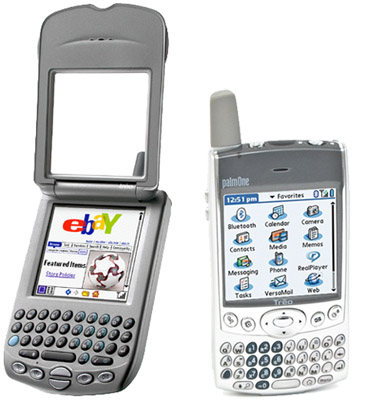 The first Treos — the 180 and 180g — were forgettable (particularly the 180g, which tragically required Palm's classic Graffiti handwriting input for text entry), but before the end of the year, the 270 (for GSM networks) and 300 (for CDMA) were both shipping. That's where things started to get interesting. These suckers had color displays and at least pretended to do a decent job of web browsing using the company's Blazer app — something RIM couldn't really claim with the 6800. The 270 and 300 were so interesting, in fact, that they ultimately led directly to the release of the Treo 600 the following year, one of the most significant and influential smartphones ever released (it was so influential, in fact, that its genes still live on today in Palm's Treo Pro). The first Treos — the 180 and 180g — were forgettable (particularly the 180g, which tragically required Palm's classic Graffiti handwriting input for text entry), but before the end of the year, the 270 (for GSM networks) and 300 (for CDMA) were both shipping. That's where things started to get interesting. These suckers had color displays and at least pretended to do a decent job of web browsing using the company's Blazer app — something RIM couldn't really claim with the 6800. The 270 and 300 were so interesting, in fact, that they ultimately led directly to the release of the Treo 600 the following year, one of the most significant and influential smartphones ever released (it was so influential, in fact, that its genes still live on today in Palm's Treo Pro). Even though RIM had just launched the 6810 and 6820, they were already looking outdated sitting on a table next to Handspring's (and later palmOne's) offerings. It didn't really matter, though; Waterloo's secret sauce lay as much in its robust server-side capabilities as it did in the hardware itself. What early BlackBerrys lacked in finesse, they made up for in manageability — music to any IT staff's ears. Palm and Handspring, on the other hand, had both done a better job over the years of straddling the fence between office and home — their devices had already been sold in big-box stores since the 90s, and the Treo seemed like a natural extension of that. Palm, of course, lacked a well-known, enterprise-friendly push email solution; for some, that was a deal breaker, but for others, the Treo's sex appeal made it the obvious choice. Indeed, RIM was still years away from hitting its stride with consumers; just like its predecessors, carriers were positioning the 6800 series toward businesspeople alone, but the strategy certainly seemed to be paying dividends. Before 2002 closed out, they'd go on to announce the 6510 for Nextel and the 6850 for Verizon — the company's first CDMA device. The world had started the year with a selection of zero BlackBerry phones and ended it with five. The revolution had begun, and as it turned out, there was plenty of room in the market for RIM and Palm to both stake their claims — the concept was still young, competition was yet to become fierce, and the target demographic was hungry for innovation. Both companies would go on to hold significant pieces of the pie among business users (particularly in North America) in the latter half of the decade. Acknowledging the elephant in the room It wasn't just Handspring (and later palmOne) with skin in the game, either. Though it had a muted presence in North America, Nokia was jumping out to a commanding lead globally on the strength of its Symbian-based Series 60 platform, a lighter-weight derivative of the Series 80 core used on the Communicator series. By the end of 2003, some estimates had its smartphone market share near a staggering 90 percent worldwide. That's a stat you can't ignore, and RIM was eminently aware that it needed to capitalize on its "CrackBerry" reputation — its strength as an enterprise software and services player — and keep its hardware ego in check. Sure, it now had several phones in the market, but so did everyone else — so why try to beat 'em if you can just join 'em and still make money?  To that end, early '03 saw the introduction of BlackBerry Connect on Symbian, bringing BlackBerry's then-legendary corporate email capabilities to a seemingly limitless firehose of Nokia devices (along with a couple Sony Ericssons) and potentially upping RIM's profile in the all-important European theater. It also hit Windows Mobile and Palm OS the same year, cementing BlackBerry's status as a platform, not just a line of devices. The Connect solution would ultimately never gain the same level of popularity as the company's handsets would for hooking up to BlackBerry servers, but from RIM's perspective, that's probably just as well — they saw it as a win-win opportunity, and Nokia, Microsoft, and Palm very likely did as well. To that end, early '03 saw the introduction of BlackBerry Connect on Symbian, bringing BlackBerry's then-legendary corporate email capabilities to a seemingly limitless firehose of Nokia devices (along with a couple Sony Ericssons) and potentially upping RIM's profile in the all-important European theater. It also hit Windows Mobile and Palm OS the same year, cementing BlackBerry's status as a platform, not just a line of devices. The Connect solution would ultimately never gain the same level of popularity as the company's handsets would for hooking up to BlackBerry servers, but from RIM's perspective, that's probably just as well — they saw it as a win-win opportunity, and Nokia, Microsoft, and Palm very likely did as well. Consumers are people, too Even in these early years, RIM had already reinvented itself a couple times; gone were the days of "BlackBerry" meaning a small, ugly, all-black pager with all the ergonomics of a VAX that you could only get (and probably were forced to take) through your employer. Thanks likely to the introduction of its range of smartphones in the prior few months, 2003 would be the year that the company started to finally dip its toe in what it called the "prosumer" market — customers that weren't necessarily being offered a BlackBerry as part of an IT-managed fleet at their company, but still really needed (and were willing to pay for) always-on push email. Cingular, T-Mobile, and others started to introduce POP and IMAP email access on their BlackBerry devices early that year, marking the first time they were viable options for one-off buyers. Paying $30 a month for a mere 3MB of data service on top of a voice plan — as Cingular was doing at the time — was still a foreign concept to 99 percent of the non-enterprise market, but it marked one of the first early steps in acclimating end users to the idea. Today, even for a high-feature dumbphone, $70 is a reasonable charge for monthly service and $120 or more isn't unheard of — it's a trade-off we've collectively made to be connected all of the time, and RIM helped blaze that wallet-emptying trail. Small and colorful RIM continued to press as hard on the hardware front in 2003 as it had in 2002, proving it wouldn't let its hardware go quietly into the night and transform into a software firm the same way Good would. The new 6200 series took baby steps toward the classic BlackBerry look we all know today by lightening and shrinking the package, squishing the 6800's display down to a more typical landscape aspect ratio, and making it more functional than ever by stuffing in more RAM and introducing integrated attachment viewing. 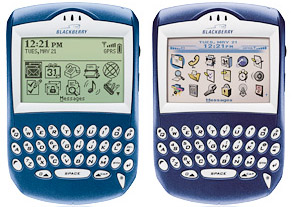 Just a few months later, the company would introduce the 7200 series, its very first color models — but they wouldn't look very familiar to a modern-day Bold owner. Instead, the 7200 was nearly a dead ringer for its lower-end 6200 cousin, swapping out the low-resolution monochrome display for a 65,000-color one that clocked in at just 240 x 160 pixels — brutal by modern standards. The crappy resolution on the new model could be chalked up in part to the fact that the screen was transflective, a sunlight-viewable tech that has been all but abandoned in modern smartphones because they simply don't pony up sufficient eye candy — these days, you need HVGA or WVGA resolution and killer contrast ratios to earn respect and market share. Just a few months later, the company would introduce the 7200 series, its very first color models — but they wouldn't look very familiar to a modern-day Bold owner. Instead, the 7200 was nearly a dead ringer for its lower-end 6200 cousin, swapping out the low-resolution monochrome display for a 65,000-color one that clocked in at just 240 x 160 pixels — brutal by modern standards. The crappy resolution on the new model could be chalked up in part to the fact that the screen was transflective, a sunlight-viewable tech that has been all but abandoned in modern smartphones because they simply don't pony up sufficient eye candy — these days, you need HVGA or WVGA resolution and killer contrast ratios to earn respect and market share. The 7250 would also be RIM's first EV-DO-capable handset, but taken as a whole, the series seemed built less to knock socks off and more simply to appease the market's calls for a color BlackBerry. In a way, it would mark the beginning of an age of R&D conservatism in Waterloo that plagues the company to this very day. One million strong (and growing) 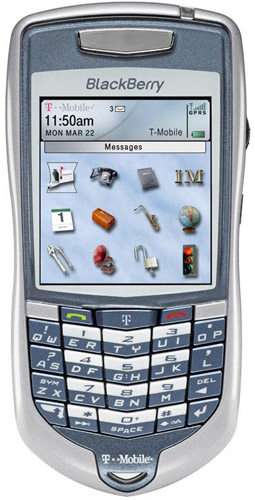 The year is 2004. Palm OS would arguably reach its zenith with the introduction of the Treo 650, a model that refined the well-received 600 in all the right ways (and brought about the slightly-curved QWERTY arrangement that most — but not all — future Palms would go on to use). RIM signed up its millionth subscriber early in the year, a sign of great things to come over the next twelve months; the company would be announcing new carrier deals in every corner of the world virtually every week, and the tall-display form factor introduced way back on the data-only 957 would have one last hurrah on the 7700 series. 2004 would also see the first speakerphone-enabled BlackBerry, Nextel's 7510 for iDEN. As with the 7200, RIM going all-in with groundbreaking design or functionality — both of the new models looked virtually identical to the 6200 of old, not a good thing considering that the 6200 had already looked pretty outdated by the time it was released. The year is 2004. Palm OS would arguably reach its zenith with the introduction of the Treo 650, a model that refined the well-received 600 in all the right ways (and brought about the slightly-curved QWERTY arrangement that most — but not all — future Palms would go on to use). RIM signed up its millionth subscriber early in the year, a sign of great things to come over the next twelve months; the company would be announcing new carrier deals in every corner of the world virtually every week, and the tall-display form factor introduced way back on the data-only 957 would have one last hurrah on the 7700 series. 2004 would also see the first speakerphone-enabled BlackBerry, Nextel's 7510 for iDEN. As with the 7200, RIM going all-in with groundbreaking design or functionality — both of the new models looked virtually identical to the 6200 of old, not a good thing considering that the 6200 had already looked pretty outdated by the time it was released. The solution? Completely rethink the keyboard. RIM came out of its slumber and rocked the boat later in '04 more than it had since the announcement of its first phones by rolling out the 7100 line — along with a little something called "SureType." Up until that point, each and every BlackBerry that came off the line used a traditional QWERTY thumb board; SureType turned things upside-down by doubling up two letters per key, a compromise between full QWERTY and the T9 / triple-tap world of numeric keypads. Beyond SureType, though, the 7100 was a radically different design for RIM — its first that made concessions to appeal to consumers. It looked and worked vaguely like a phone. Though it hadn't yet succumbed to the d-pad trend, the 7100 also added dedicated Send and End keys above the keyboard and was marketed directly to consumers in T-Mobile, Cingular, Sprint, and Verizon stores. Put simply, it was a predecessor to the Pearl in every sense of the word — RIM finally had its eye squarely on the consumer side of the market, and it'd end up paying off. Reinventing the bread and butter  BlackBerry was more popular than ever. In a year and a half, the service exploded from 1 million to over 4 million subscribers, but the time had come: RIM could no longer stretch the industrial design of the 6800 any further than it already had, and in late 2005 it finally took the bold (but totally necessary) step of redesigning its time-tested flagship from the ground up. Waterloo rode the resulting lineup — the 8700 series — to new heights, deploying on dozens of carriers around the world with a theme that mimicked the 7100 that had been unveiled a year prior. There were notable firsts: in North America, it became both the company's first EDGE-compliant handset and its first with a QVGA display. It was also the first QWERTY BlackBerry with a proper Send / End key arrangement; needless to say, the modern BlackBerry we know today cemented its ancestry right here. BlackBerry was more popular than ever. In a year and a half, the service exploded from 1 million to over 4 million subscribers, but the time had come: RIM could no longer stretch the industrial design of the 6800 any further than it already had, and in late 2005 it finally took the bold (but totally necessary) step of redesigning its time-tested flagship from the ground up. Waterloo rode the resulting lineup — the 8700 series — to new heights, deploying on dozens of carriers around the world with a theme that mimicked the 7100 that had been unveiled a year prior. There were notable firsts: in North America, it became both the company's first EDGE-compliant handset and its first with a QVGA display. It was also the first QWERTY BlackBerry with a proper Send / End key arrangement; needless to say, the modern BlackBerry we know today cemented its ancestry right here. Though it supported EV-DO early on, RIM was much slower in taking up UMTS than most of its rivals, putting it at a distinct spec sheet disadvantage on Cingular in the US and virtually every carrier in Europe (even the 8900 and brand-new 8500 lines stop at EDGE, practically unheard of for a smartphone from a major manufacturer these days). Mercifully, some Europeans got a taste with certain variants of the 8700 that supported UMTS 2100 — but Americans would still have years to wait. A BlackBerry in every pocket  By 2006, every carrier that offered BlackBerry was more than happy to sell a 7100 or 8700 to Joe Six-Pack, regardless of corporate affiliation. RIM and its partners had done a decent job of making it clear to would-be buyers that you didn't need to wear a suit, own an Exchange account, or get permission from your IT overlords to purchase, use, and enjoy a BlackBerry of your own. Problem was, RIM had never designed and built a no-compromises consumer device. The 7100 came within earshot, but by 2006, times had changed — you couldn't put a phone (smart or otherwise) on the shelf without a camera and a handsome design and expect it to sell itself. By 2006, every carrier that offered BlackBerry was more than happy to sell a 7100 or 8700 to Joe Six-Pack, regardless of corporate affiliation. RIM and its partners had done a decent job of making it clear to would-be buyers that you didn't need to wear a suit, own an Exchange account, or get permission from your IT overlords to purchase, use, and enjoy a BlackBerry of your own. Problem was, RIM had never designed and built a no-compromises consumer device. The 7100 came within earshot, but by 2006, times had changed — you couldn't put a phone (smart or otherwise) on the shelf without a camera and a handsome design and expect it to sell itself. That all changed in September of '06 with the introduction of the 8100 series, a phone we would come to know better as the Pearl. The fact that this was RIM's first handset christened with a brand name underscored its intended target audience: this was solidly a consumer device. Adopting the SureType input system first seen on the 7100, everything about it screamed its consumer roots from the snazzy color palette to the presence of a 1.3 megapixel camera — a BlackBerry first. It also marked the introduction of the trackball, an utterly unique feature for a phone at the time and the genesis of the "Pearl" name; it was the first time RIM had employed front-facing directional navigation of any kind, in fact, and as it turns out, they wouldn't look back. As we know today, the Pearl would become a defining phone for RIM — its own RAZR, in a way, but without the brutal downside than Motorola would go on to experience. Versions of the handset were sold on virtually every carrier in North America and in many locales around the world; some of those are still sold today, including a clamshell version in the 8200 series. The design was so popular, in fact, that RIM took a mid-cycle opportunity to swap out the guts of the original GSM-flavored 8100 to add in a 2 megapixel camera, WiFi, and GPS. In an industry as brutal and fickle as consumer wireless, it takes nothing less than a miracle to create a device with three solid years of market longevity. Meet the grandkids 
Outside the Pearl line, RIM ultimately chose to split the bulk of its business — the traditional QWERTY form factor — into distinct consumer- and pro-oriented series starting with the Curve 8300 and 8800 in early 2007. Over the years, we've gone on to witness the release of two more Curves — the 8900 and 8500 — along with three more pro models, spawning the Bold and Tour brands. By the end of 2008, RIM seemed to acknowledge the fuzzy line between its two QWERTY series by giving the original Bold a name, something that had previously been reserved for the more laid-back consumer devices. RIM's practice of slow-but-steady evolution has now brought us the broad adoption of 3G, dual-mode and WiFi radios, autofocus cameras, gorgeous high-res displays, and robust optical trackpads in place of the finicky trackballs of old, all while pushing the same back-end security, collaboration, and communication benefits that brought them superstar status a decade ago. As in the early days of the 6800, 6200, and 7200, the company's once again taking criticism for driving a theme into the ground — one look at the family tree starkly demonstrates how little has changed in nearly three years. The counter argument, of course, is that they've settled on a winning formula, refining it year after year without messing with the recipe that made billionaires of co-CEOs Lazaridis and Balsillie. What side of the fence you fall on is very much a matter of personal opinion, but on some level, it says something about one's personality: it's a choice between productivity and multimedia, vanilla and chocolate, Ford and Chevy. A BlackBerry can be your music player just as an iPhone can connect to your Exchange account — it's ultimately a question of priorities, and for some, allegiances. A gamble on reinvention Push email in a mobile device isn't the same kind of massive, paradigm-changing differentiator that it was ten years ago, and RIM can't lean on it nearly as heavily as it used to for sales — even in its traditional corporate strongholds. It needs powerful, sexy products that can compete head-to-head with any smartphone the industry has to offer. To an extent, it has those with modern QWERTY sets like the Curve 8900 and Bold 9700, but here's the rub: the consumer market has made a sharp turn toward touch in the two-plus years since the iPhone has been available. It's a segment that's not just difficult for competitors to ignore — it's impossible. Android, S60 5th Edition, and an endless onslaught of mid- to high-end featurephones validate it and make it harder to stay relevant without it. So how does a company with a host of patents regarding QWERTY thumb boards — a company that has built its reputation on the quality of its physical input methods — capitalize on something so foreign to its core competency?  That question remains largely unanswered as we end this first decade of BlackBerry's colorful existence. The company that taught us we could belt out messages with two thumbs using keys no bigger than eraser heads and made us crave constant email access from the bus, the airport, the bathroom, and the beach finds itself today in need of another revolution. The good news is that RIM doesn't roll the dice very often, but when it does, it plays for keeps; the 7100 and the Pearl were both early evidence of that, and we're now seeing that brazen attitude again with the Storm line. The company's early forays into touch are taking Waterloo well outside its comfort zone and the first models to market were almost universally panned as usability failures, but it's not all gloom and doom — like SureType, the Storm's SurePress technology is unique in the industry, and a little more refinement could probably still make it the virtual keyboard powerhouse RIM wants it to be. In 2005, RIM had 4 million subscribers to its name; in 2009, it adds over 4 million subscribers in a single quarter. BlackBerry isn't going anywhere, clearly, but for a company in RIM's position, relevance is a daily battle that requires a delicate mix of innovation and respect for tradition. And on that note, RIM, bring on the next ten years — you may have calloused and cramped our thumbs, but you haven't managed to destroy them just yet. |








 All aboard! There’s no better way to experience the beauty of Charleston and her history than from the decks of a yacht. New for 2010, enjoy a chance to unwind and review Thursday’s session with colleagues enjoying the fresh sea air and incredible harbor views that Charleston has to offer. Seating is limited and registration is available when you register for the conference.
All aboard! There’s no better way to experience the beauty of Charleston and her history than from the decks of a yacht. New for 2010, enjoy a chance to unwind and review Thursday’s session with colleagues enjoying the fresh sea air and incredible harbor views that Charleston has to offer. Seating is limited and registration is available when you register for the conference.


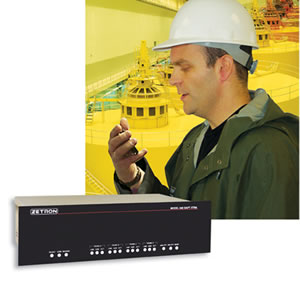 The Model 640 DAPT-XTRA Paging Terminal is a cost effective solution for small to medium-sized systems and private organizations offering a paging service based on bureau-type operator paging and/or direct telephone access. The 640 supports up to 1,500 users with up to 4 telephone lines. It also supports voice paging, voice prompts, talkback paging, and alphanumeric paging.
The Model 640 DAPT-XTRA Paging Terminal is a cost effective solution for small to medium-sized systems and private organizations offering a paging service based on bureau-type operator paging and/or direct telephone access. The 640 supports up to 1,500 users with up to 4 telephone lines. It also supports voice paging, voice prompts, talkback paging, and alphanumeric paging.  Zetron's Remote Monitoring equipment provides monitoring and notification of unusual conditions and status changes. Messages are automatically transmitted over a radio or a public address system. Notification can be sent via speaker or radio announcement, telephone, cellular phone, or paging.
Zetron's Remote Monitoring equipment provides monitoring and notification of unusual conditions and status changes. Messages are automatically transmitted over a radio or a public address system. Notification can be sent via speaker or radio announcement, telephone, cellular phone, or paging. 


 Palm takes a leap of faith — and falls flat
Palm takes a leap of faith — and falls flat  The BlackBerrys aren't ripe yet in Waterloo
The BlackBerrys aren't ripe yet in Waterloo A legendary brand emerges
A legendary brand emerges  A form factor more familiar
A form factor more familiar  2001 marked a number of important new partnerships for RIM, too, including VoiceStream (which would ultimately become T-Mobile USA) and Italy's TIM. Maybe more interesting, though, was an announcement the company made at the very tail end of the year: it'd be developing a device compatible with Motorola's iDEN network technology in partnership with Nextel. iDEN's claim to fame, of course, was (and still is) its push-to-talk interface — so did this mean that a hybrid BlackBerry cellphone was in the works? Smartphones were still a novelty at the time and heavyweights like Microsoft hadn't yet come to play ball, but the synergy was pretty obvious: road warriors do their email and take conference calls from the back of the cab on the way to LAX, after all.
2001 marked a number of important new partnerships for RIM, too, including VoiceStream (which would ultimately become T-Mobile USA) and Italy's TIM. Maybe more interesting, though, was an announcement the company made at the very tail end of the year: it'd be developing a device compatible with Motorola's iDEN network technology in partnership with Nextel. iDEN's claim to fame, of course, was (and still is) its push-to-talk interface — so did this mean that a hybrid BlackBerry cellphone was in the works? Smartphones were still a novelty at the time and heavyweights like Microsoft hadn't yet come to play ball, but the synergy was pretty obvious: road warriors do their email and take conference calls from the back of the cab on the way to LAX, after all. Of course, RIM was sitting on an enviable IP portfolio of its own by this point, and that portfolio was starting to pay dividends right around the time of NTP's original filing. 2002 saw a licensing agreement take hold with Palm (without which the Treo line's famously good keyboards would've had a hard time existing) and a series of claims filed against upstart rival Good Technology — which at the time was working on a suspiciously BlackBerry-esque device called the G100 to accompany its server-side suite that duplicated much of RIM's functionality. Good would ultimately go on to abandon the G100 to focus strictly on software and services and undergo a couple takeovers — most recently by well-known patent plaintiff Visto — so the rough-and-tumble hardware biz clearly hadn't treated them with as much kindness as it had RIM.
Of course, RIM was sitting on an enviable IP portfolio of its own by this point, and that portfolio was starting to pay dividends right around the time of NTP's original filing. 2002 saw a licensing agreement take hold with Palm (without which the Treo line's famously good keyboards would've had a hard time existing) and a series of claims filed against upstart rival Good Technology — which at the time was working on a suspiciously BlackBerry-esque device called the G100 to accompany its server-side suite that duplicated much of RIM's functionality. Good would ultimately go on to abandon the G100 to focus strictly on software and services and undergo a couple takeovers — most recently by well-known patent plaintiff Visto — so the rough-and-tumble hardware biz clearly hadn't treated them with as much kindness as it had RIM.  Following news late in 2001 that there'd be a BlackBerry coming to Nextel's iDEN network, a flurry of press releases hit in the first part of '02 touting that new handhelds with "data and voice services" would be made available on carriers around the world; AT&T in the States and Rogers AT&T in Canada both followed Nextel's lead in committing to offering them. Nextel's announcement was especially positive, dropping the bombshell that the companies had signed a "multi-year" agreement to supply iDEN-powered BlackBerrys to the network. Of course, that agreement must've worked out pretty well for everyone involved, seeing how the relationship continues to the present day.
Following news late in 2001 that there'd be a BlackBerry coming to Nextel's iDEN network, a flurry of press releases hit in the first part of '02 touting that new handhelds with "data and voice services" would be made available on carriers around the world; AT&T in the States and Rogers AT&T in Canada both followed Nextel's lead in committing to offering them. Nextel's announcement was especially positive, dropping the bombshell that the companies had signed a "multi-year" agreement to supply iDEN-powered BlackBerrys to the network. Of course, that agreement must've worked out pretty well for everyone involved, seeing how the relationship continues to the present day.  The engineers up at RIM headquarters weren't taking a breather, though — far from it. The early part of the decade was a pretty magical time for wireless, for mobile, and for gadgetry in general; a primordial soup of paradigm-shifting technologies were all rapidly coming to fruition at the same time — everything from cheap, high-quality color LCDs to lithium-ion polymer batteries and broadly-available data networks — and phones from all companies were being developed, announced, and released more rapidly than they ever had been before. Gone were the days of owning a DynaTAC for eight years or a StarTAC for four — useful innovation was simply coming to market too quickly for consumers (or manufacturers) to get comfortable for more than a year or two at a stretch.
The engineers up at RIM headquarters weren't taking a breather, though — far from it. The early part of the decade was a pretty magical time for wireless, for mobile, and for gadgetry in general; a primordial soup of paradigm-shifting technologies were all rapidly coming to fruition at the same time — everything from cheap, high-quality color LCDs to lithium-ion polymer batteries and broadly-available data networks — and phones from all companies were being developed, announced, and released more rapidly than they ever had been before. Gone were the days of owning a DynaTAC for eight years or a StarTAC for four — useful innovation was simply coming to market too quickly for consumers (or manufacturers) to get comfortable for more than a year or two at a stretch. The first Treos — the 180 and 180g — were forgettable (particularly the 180g, which tragically required Palm's classic Graffiti handwriting input for text entry), but before the end of the year, the 270 (for GSM networks) and 300 (for CDMA) were both shipping. That's where things started to get interesting. These suckers had color displays and at least pretended to do a decent job of web browsing using the company's Blazer app — something RIM couldn't really claim with the 6800. The 270 and 300 were so interesting, in fact, that they ultimately led directly to the release of the Treo 600 the following year, one of the most significant and influential smartphones ever released (it was so influential, in fact, that its genes still live on today in Palm's Treo Pro).
The first Treos — the 180 and 180g — were forgettable (particularly the 180g, which tragically required Palm's classic Graffiti handwriting input for text entry), but before the end of the year, the 270 (for GSM networks) and 300 (for CDMA) were both shipping. That's where things started to get interesting. These suckers had color displays and at least pretended to do a decent job of web browsing using the company's Blazer app — something RIM couldn't really claim with the 6800. The 270 and 300 were so interesting, in fact, that they ultimately led directly to the release of the Treo 600 the following year, one of the most significant and influential smartphones ever released (it was so influential, in fact, that its genes still live on today in Palm's Treo Pro). To that end, early '03 saw the introduction of BlackBerry Connect on Symbian, bringing BlackBerry's then-legendary corporate email capabilities to a seemingly limitless firehose of Nokia devices (along with a couple Sony Ericssons) and potentially upping RIM's profile in the all-important European theater. It also hit Windows Mobile and Palm OS the same year, cementing BlackBerry's status as a platform, not just a line of devices. The Connect solution would ultimately never gain the same level of popularity as the company's handsets would for hooking up to BlackBerry servers, but from RIM's perspective, that's probably just as well — they saw it as a win-win opportunity, and Nokia, Microsoft, and Palm very likely did as well.
To that end, early '03 saw the introduction of BlackBerry Connect on Symbian, bringing BlackBerry's then-legendary corporate email capabilities to a seemingly limitless firehose of Nokia devices (along with a couple Sony Ericssons) and potentially upping RIM's profile in the all-important European theater. It also hit Windows Mobile and Palm OS the same year, cementing BlackBerry's status as a platform, not just a line of devices. The Connect solution would ultimately never gain the same level of popularity as the company's handsets would for hooking up to BlackBerry servers, but from RIM's perspective, that's probably just as well — they saw it as a win-win opportunity, and Nokia, Microsoft, and Palm very likely did as well. Just a few months later, the company would introduce the 7200 series, its very first color models — but they wouldn't look very familiar to a modern-day Bold owner. Instead, the 7200 was nearly a dead ringer for its lower-end 6200 cousin, swapping out the low-resolution monochrome display for a 65,000-color one that clocked in at just 240 x 160 pixels — brutal by modern standards. The crappy resolution on the new model could be chalked up in part to the fact that the screen was transflective, a sunlight-viewable tech that has been all but abandoned in modern smartphones because they simply don't pony up sufficient eye candy — these days, you need HVGA or WVGA resolution and killer contrast ratios to earn respect and market share.
Just a few months later, the company would introduce the 7200 series, its very first color models — but they wouldn't look very familiar to a modern-day Bold owner. Instead, the 7200 was nearly a dead ringer for its lower-end 6200 cousin, swapping out the low-resolution monochrome display for a 65,000-color one that clocked in at just 240 x 160 pixels — brutal by modern standards. The crappy resolution on the new model could be chalked up in part to the fact that the screen was transflective, a sunlight-viewable tech that has been all but abandoned in modern smartphones because they simply don't pony up sufficient eye candy — these days, you need HVGA or WVGA resolution and killer contrast ratios to earn respect and market share.  The year is 2004. Palm OS would arguably reach its zenith with the introduction of the Treo 650, a model that refined the well-received 600 in all the right ways (and brought about the slightly-curved QWERTY arrangement that most — but not all — future Palms would go on to use). RIM signed up its millionth subscriber early in the year, a sign of great things to come over the next twelve months; the company would be announcing new carrier deals in every corner of the world virtually every week, and the tall-display form factor introduced way back on the data-only 957 would have one last hurrah on the 7700 series. 2004 would also see the first speakerphone-enabled BlackBerry, Nextel's 7510 for iDEN. As with the 7200, RIM going all-in with groundbreaking design or functionality — both of the new models looked virtually identical to the 6200 of old, not a good thing considering that the 6200 had already looked pretty outdated by the time it was released.
The year is 2004. Palm OS would arguably reach its zenith with the introduction of the Treo 650, a model that refined the well-received 600 in all the right ways (and brought about the slightly-curved QWERTY arrangement that most — but not all — future Palms would go on to use). RIM signed up its millionth subscriber early in the year, a sign of great things to come over the next twelve months; the company would be announcing new carrier deals in every corner of the world virtually every week, and the tall-display form factor introduced way back on the data-only 957 would have one last hurrah on the 7700 series. 2004 would also see the first speakerphone-enabled BlackBerry, Nextel's 7510 for iDEN. As with the 7200, RIM going all-in with groundbreaking design or functionality — both of the new models looked virtually identical to the 6200 of old, not a good thing considering that the 6200 had already looked pretty outdated by the time it was released.  BlackBerry was more popular than ever. In a year and a half, the service exploded from 1 million to over 4 million subscribers, but the time had come: RIM could no longer stretch the industrial design of the 6800 any further than it already had, and in late 2005 it finally took the bold (but totally necessary) step of redesigning its time-tested flagship from the ground up. Waterloo rode the resulting lineup — the 8700 series — to new heights, deploying on dozens of carriers around the world with a theme that mimicked the 7100 that had been unveiled a year prior. There were notable firsts: in North America, it became both the company's first EDGE-compliant handset and its first with a QVGA display. It was also the first QWERTY BlackBerry with a proper Send / End key arrangement; needless to say, the modern BlackBerry we know today cemented its ancestry right here.
BlackBerry was more popular than ever. In a year and a half, the service exploded from 1 million to over 4 million subscribers, but the time had come: RIM could no longer stretch the industrial design of the 6800 any further than it already had, and in late 2005 it finally took the bold (but totally necessary) step of redesigning its time-tested flagship from the ground up. Waterloo rode the resulting lineup — the 8700 series — to new heights, deploying on dozens of carriers around the world with a theme that mimicked the 7100 that had been unveiled a year prior. There were notable firsts: in North America, it became both the company's first EDGE-compliant handset and its first with a QVGA display. It was also the first QWERTY BlackBerry with a proper Send / End key arrangement; needless to say, the modern BlackBerry we know today cemented its ancestry right here.  By 2006, every carrier that offered BlackBerry was more than happy to sell a 7100 or 8700 to Joe Six-Pack, regardless of corporate affiliation. RIM and its partners had done a decent job of making it clear to would-be buyers that you didn't need to wear a suit, own an Exchange account, or get permission from your IT overlords to purchase, use, and enjoy a BlackBerry of your own. Problem was, RIM had never designed and built a no-compromises consumer device. The 7100 came within earshot, but by 2006, times had changed — you couldn't put a phone (smart or otherwise) on the shelf without a camera and a handsome design and expect it to sell itself.
By 2006, every carrier that offered BlackBerry was more than happy to sell a 7100 or 8700 to Joe Six-Pack, regardless of corporate affiliation. RIM and its partners had done a decent job of making it clear to would-be buyers that you didn't need to wear a suit, own an Exchange account, or get permission from your IT overlords to purchase, use, and enjoy a BlackBerry of your own. Problem was, RIM had never designed and built a no-compromises consumer device. The 7100 came within earshot, but by 2006, times had changed — you couldn't put a phone (smart or otherwise) on the shelf without a camera and a handsome design and expect it to sell itself. 

